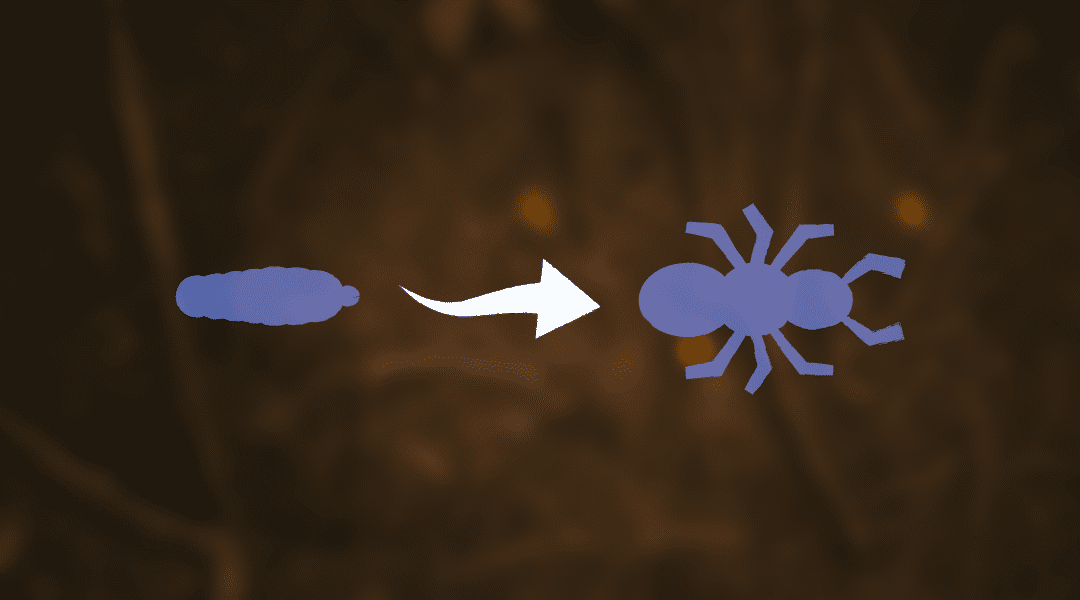We’ve all experienced that moment when pests seem to appear out of thin air, turning our homes into their personal playgrounds. But have you ever wondered how these pesky intruders come to be? Understanding the life cycles of common household pests can be your secret weapon in keeping them out for good. In this blog, we’re going to simplify and shed light on the life cycles of those annoying pests that bug us the most.
1. Ants: The Team Players
Ants are like the ultimate team players in the pest world, displaying a fascinating degree of social organization. Their lifecycle unfolds in four stages: egg, larva, pupa, and adult. These tiny critters form massive colonies, sometimes numbering in the thousands, where each member plays a specific role to ensure the colony’s survival. You’ll be intrigued by the division of labor, with ants taking on tasks such as foraging, nursing the young, and defending the nest. Observing how ants operate can be both captivating and informative, helping you pinpoint their nests and effectively evict them from your home.
2. Cockroaches: Survivors Extraordinaire
Cockroaches are infamous for their survival skills. They go through three stages: egg, nymph, and adult. Baby cockroaches (nymphs) may look like mini versions of the adults, but they’re no less problematic. Understanding their lifecycle is vital because cockroaches reproduce rapidly, and you don’t want a full-blown infestation on your hands.
3. Mosquitoes: The Tiny but Fierce
Mosquitoes are the miniature villains of the insect world, known for their irritating bites and disease transmission. Their lifecycle is a four-step process: egg, larva, pupa, and adult. Learning about their life cycles can help you eliminate their breeding grounds, such as stagnant water, and protect your family from itchy mosquito encounters and potential health risks.
4. Bed Bugs: The Stealthy Intruders
Bed bugs are stealthy invaders that can profoundly disrupt your sleep and overall comfort. Their intriguing lifecycle spans six distinct stages: egg, followed by five nymphal stages, culminating in the adult bed bug. Recognizing the signs of a bed bug infestation in its early stages is absolutely crucial, as these pests are notorious for their resilience once they’ve established themselves in your home’s nooks and crannies.
5. Termites: The Home Wreckers
Termites are often referred to as the silent architects of destruction, gradually undermining the very structure of your home without a hint of noise. Within their highly organized colonies, termites adopt distinct roles, dividing themselves into three primary castes: workers, soldiers, and reproductives, consisting of kings and queens. Understanding the termite lifecycle allows you to stay one step ahead, safeguarding your most valuable investment from potential devastation.
6. Fleas: The Bouncing Troublemaker
Fleas, those tiny but pesky creatures, are not only a nuisance for our beloved pets but can also take a nibble at us, causing itchy discomfort. Their intriguing lifecycle encompasses four distinct stages: egg, larva, pupa, and finally, the adult flea. Understanding this lifecycle is crucial for keeping your home free from these persistent intruders. To effectively prevent flea infestations, it’s essential to prioritize good pet hygiene, which includes regular grooming and appropriate flea treatments.
Pests may be a nuisance, but they’re not enigmatic creatures. By understanding the life cycles of common household pests, you can take proactive steps to keep them out and safeguard your home and loved ones. If you ever find yourself overwhelmed by a pest problem, remember that Meers is here to lend a hand with tailored pest control strategies. Don’t let pests take over your home – master their lifecycles and maintain a pest-free haven. If you need more help identifying any pests, view our complete Pest ID page on our website!




